As an Amazon Associate I earn from qualifying purchases.
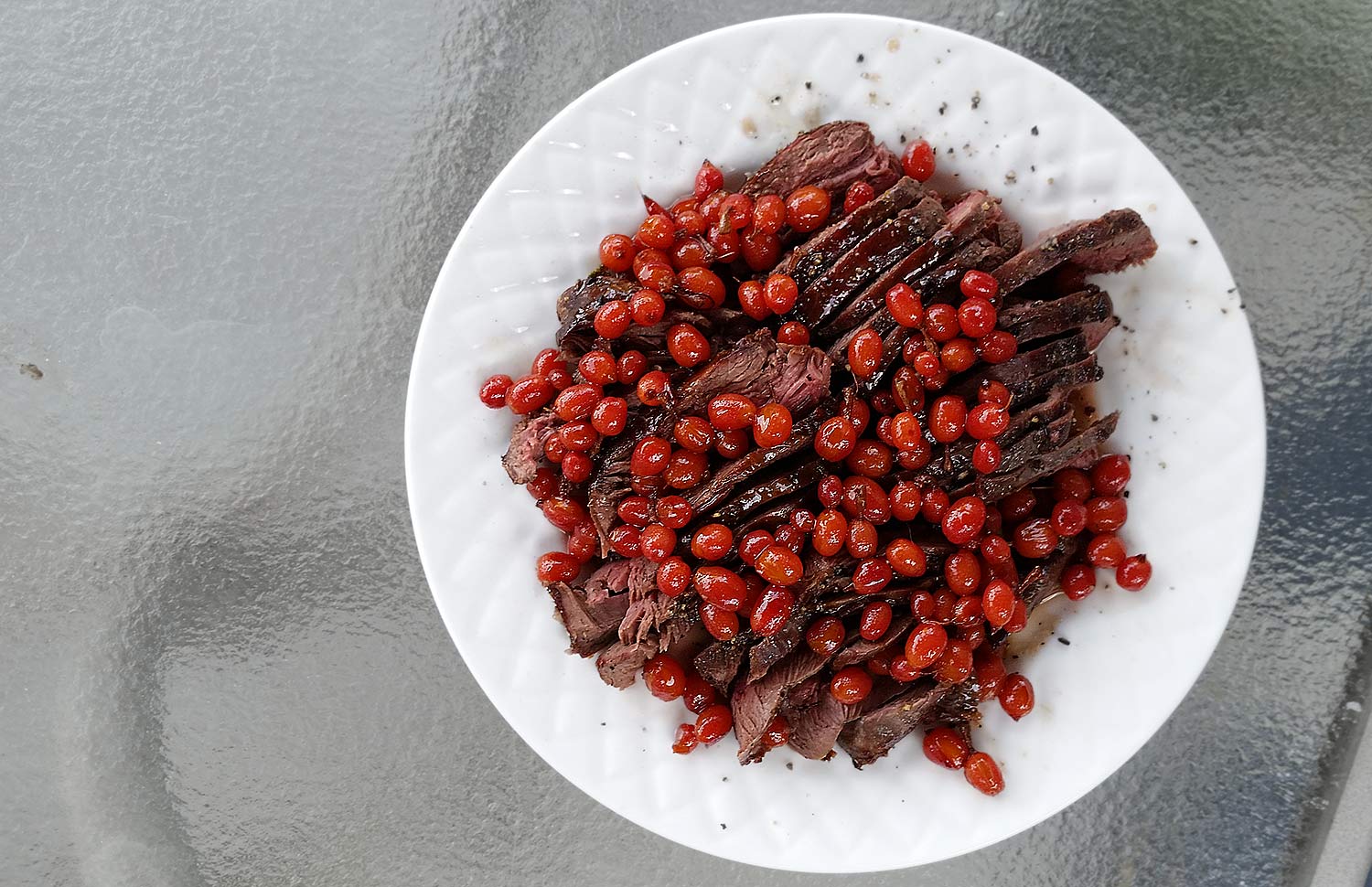
I am here to tell you that eating sage grouse is not the chore you think it is.
Of all the game birds in America, none is more maligned than Centrocercus urophasianus, the greater sage grouse. This particular grouse is native to our great Western High Desert, roughly centering on Wyoming, and reaching out to California, Oregon, Idaho, Nevada, Utah, Montana, Colorado, and, to a limit extent, the far western Dakotas and southern Alberta.
It is a bird wholly of the sage. I wrote about hunting these birds — and of the need to work to save their habitat — in this space recently, but this post is all about eating sage grouse.
First, know that sage grouse eat sage.
Sometimes it is all they eat. And even their other favorite foods, dandelions, yarrow, a few minor bean-like plants and the occasional bug, are merely accents to a steady diet of artemisia plants. And guess what? Sage grouse don’t have a muscular gizzard to grind hard foods like seeds. Freaky, eh?
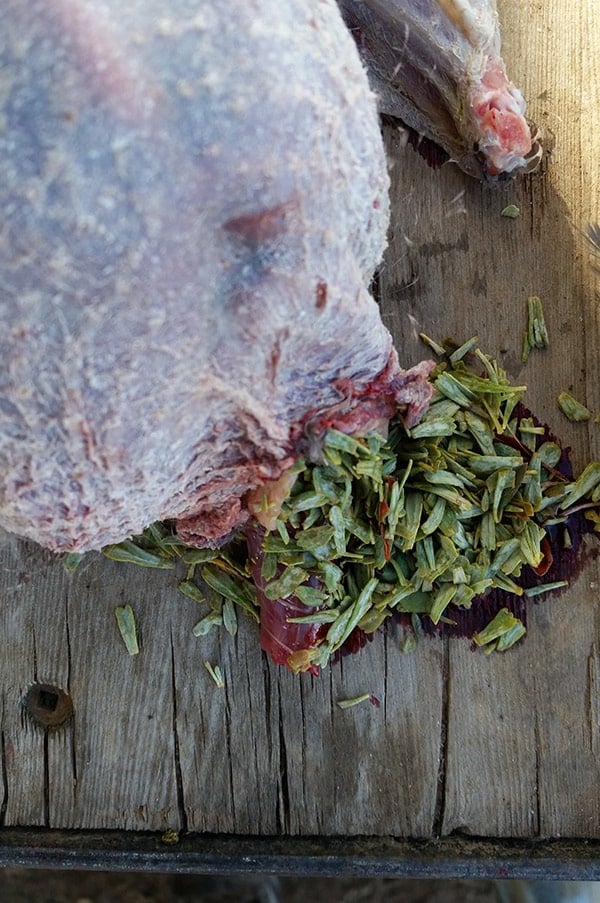
Yes, artemisia, as is the same plant as wormwood (of absinthe fame), and most definitely not the sage we eat, which is a salvia. Where I hunted the birds, they were full of tender tips of Artemisia nova, the black sagebrush. Made sense. It was all around us.
I tell you what sage grouse eat to tell you what they will taste like. You are what you eat, after all. And that answer is sage. Beautiful, aromatic, beguiling sage. The smell of sage in the high desert is intoxicating, a smell real men should all have as a cologne. Slightly minty, vaguely camphorous, musky. It is an aroma of wildness.
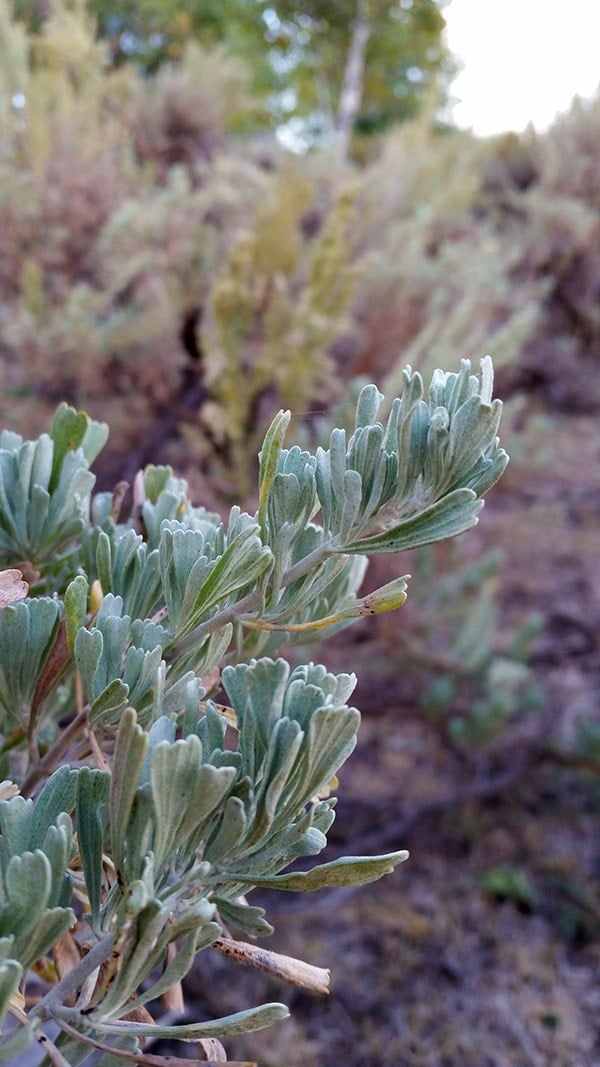
And it is not to be shunned. Virtually every person who hates on sage grouse complains of this sagey-ness. To which I say, well, sure! What do you expect? Do not try to undo what Nature gave you. Embrace that aroma along with that gamey funk that all grouse have. You can try to neutralize it, but you will fail unless you obliterate everything special about the taste of these very special birds.
And if you do that, why bother hunting them? Remember, you are not filling your freezer with sage hens. To shoot and eat one is a borderline ceremonial act.
Which brings me to the first step in my little guide to eating sage grouse: Choose hens. Both toms (roosters?) and hens will be sagey, but the general consensus is that the hens are more tender, especially a young-of-the-year hen like I shot. I know you don’t always have a choice when wingshooting, but if you do, swing at the hens for the table, toms for the wall.
Now, to pluck or not? I plucked my sage hen, because I wanted to see how hard it would be. The answer is not very, at least compared to pheasants, quail and ruffed grouse. Sage grouse skin is thicker than these other birds, and I found dry-plucking them to be pretty simple.
Why keep the skin? Well, in it lies much of the sage grouse’s special flavor. If this flavor is too strong for you, skin the bird.
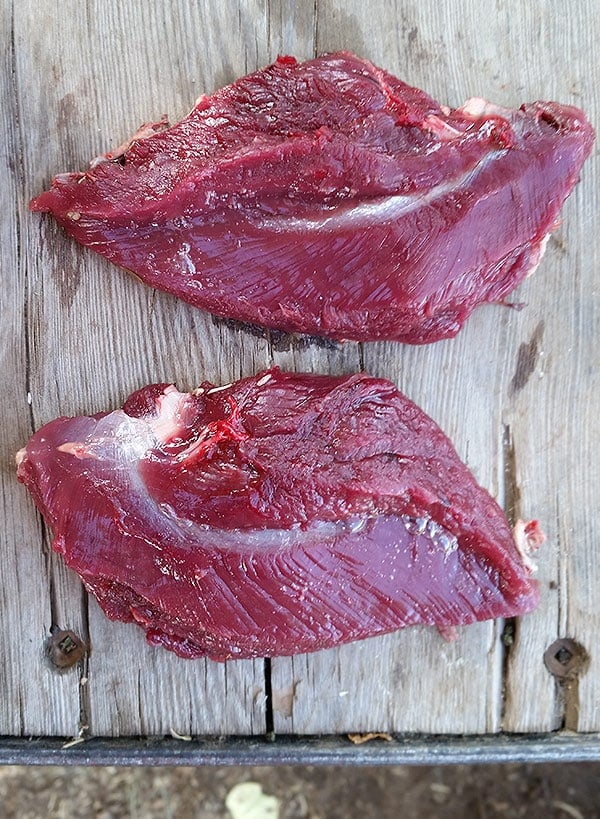
Note I said “skin,” not “breast.” Before I’d shot sage grouse, I’d believed that they were a dark meat grouse, like a sharp-tailed grouse. And, well, they are, kinda-sorta. What sage grouse actually are are what I call “opposite birds.” Dark breast meat, light legs, wings and thighs. It was super trippy to see that. The only other bird we hunt that I know is an opposite bird is a woodcock, but I hear that prairie chickens, a cousin of the sage grouse, are, too.
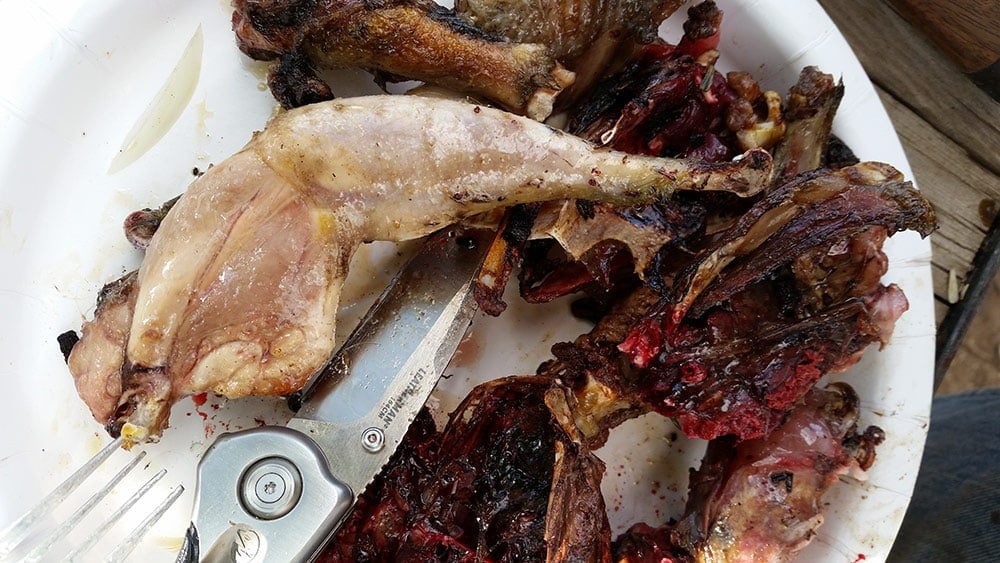
Why care? Because when you have a dark meat bird, you want to cook it like steak, not like chicken.
This is another huge mistake people have when eating sage grouse: They overcook the skinless breasts, which then taste like sagey liver. No bueno. Cook sage grouse breasts like a steak, or like the breast meat of a duck, goose, sharpie, dove or pigeon, which is to say rare to medium. Do this and they’re like a seasoned steak.
I cooked mine in butter with some red currants I’d found near where I’d shot the grouse, plus a splash of red wine vinegar and maple syrup and boom! The plate at the top of this post was eaten up in a nanosecond, and even the sage grouse skeptics snapped it up.
What to so with the rest of the bird? Treat it like any other grouse or pheasant.
I stewed mine to make a broth, then stripped all the meat from the bones and sinews in the drumsticks. Into that broth went potatoes, some juniper from a nearby tree, a can of chopped tomatoes, an onion and a little Coors Light. Hey, I was in hunting camp — it’s what I had around me.
Suffice to say everyone enjoyed it. The presence of even one sage grouse carcass in a bowl of soup transformed some boring ingredients into a celebration of the sagebrush sea we were camping in.
And what’s not to love about that?
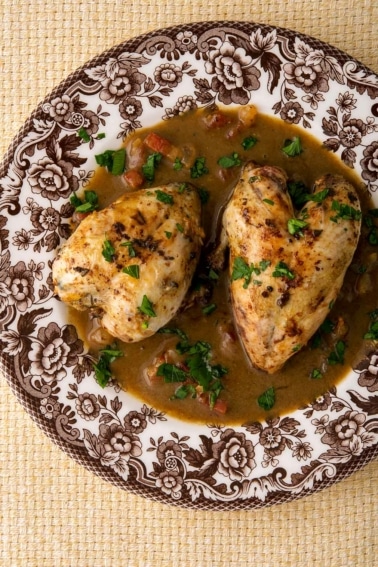
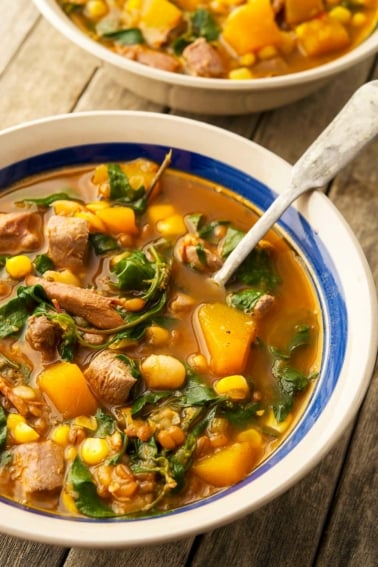
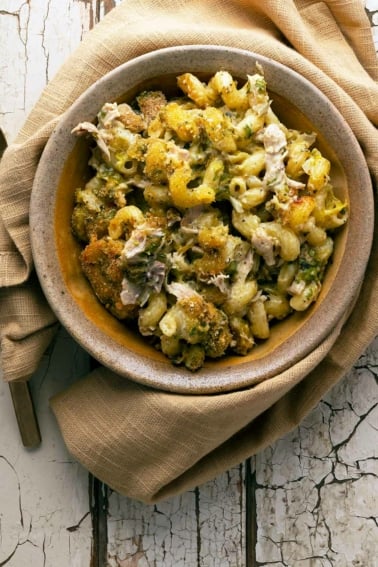
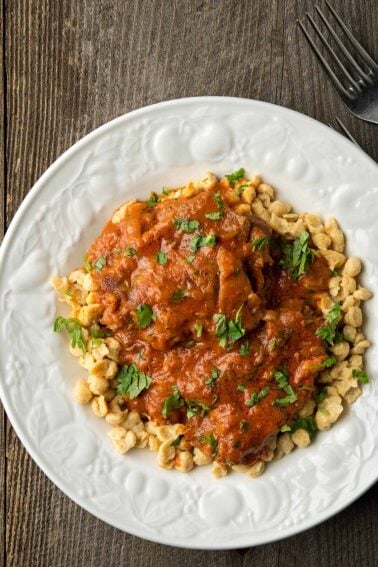
Hank,
Thanks for these great recipes. I’ve had the privilege of eating a sage grouse that was eating soley sage and I will say, it was the best game bird I’ve ever eaten – no lie. But these days, mid-September non-resident sage grouse gets us birds that still have plenty of hoppers and dandelions and I found they lack that sage flavor that I found so unique.
I’ve been thinking of making a stroganoff with the breasts I harvested this year but I honestly don’t know where sit on the meat quality spectrum. Would braising them and making a slow cook stroganoff be a better option than treating them like a finer cut and searing them? If a stroganoff seems way out in left field, do you recommend any other rich dish?
Best,
Stephen
Stephen: You can make stroganoff, for sure. And no need for braising it. The breast meat, sliced thin for stroganoff, will work great.
Well, it took two years to finally make Sage Grouse stroganoff and although I’d like to say it as worth the wait, it’s more accurate to say I’ve been missing out. The Sage Grouse complemented the stroganoff incredibly well and I had forgotten how delicious a simple medium rare bird steak can be. Thanks again for the encouragement and I recommend your stroganoff recipe to anyone hesitant to eat this rarity. Or not; more birds for us, I suppose!
I hope this site is still active; very good place to read. Question: Is it necessary to eviscerate sage grouse immediately upon shooting them? I have been told to eviscerate them “before they hit the ground” or whatever they have been eating will permeate their muscles and potentially ruin the flavor. TIA.
John: Not really. But they are always going to taste sagey. I would not wait more than a few hours to gut them though. Like, when you get back to the truck. It’s because they are big birds and retain a lot of heat even after they’ve died.
I grew up in Wyoming and at a lucky time we had sage grouse by the thousands, pheasant, chukar, ducks and huns. The sage grouse were so plentiful that hunting with a shotgun was considered “not fair” hunting. Once active predator control (coyotes) ceased so did the phesants and most of the sage hens. It leaves me with great memories and some sadness. BTW Hank I really like your work here and am working my way through your wonderful recipes.
Hi Hank,
I just wanted to comment on your writing, I live in Wyoming and have searched for the words that you have used so eloquently to describe the smell of the land where I live, there are tons of sage chickens here but I’ve never shot one because of the rumors that they taste bad, I think I’ll change that status now.
Your writing skills are over the top in my opinion, keep up the good work.
Did you go to college? If so, did you study writing?
Jeff: Thank you, I appreciate it. Yes, I went to college. I majored in history and political science.
first time here and enjoyed the info on sage grouse. look forward to more recipes and ideas..
Sage hens are one of my favorite birds to hunt and eat. Next season ill have to try them cooked with your suggestions!
Thanks Hank!
ok, this is a bit of a strange question, as you were talking about the bird and not the plant. However, are any plants of the Artemisia genus toxic to consume in small amounts? I enjoy the flavor and would like to use it to season other birds. thanks
Phil: Not that I know of… in small amounts. It so bitter I can’t imagine anyone eating large amounts, anyway.
On sage grouse, which I only hunt with falcons, the legs, head, liver, heart, etc., are shared with the falcon. The breast fillets are what we eat, seared hot and fast.. These fillets are a rare treat, to be treasured, savored and respected, in my opinion served best with a plum chutney, though Hank would doubtless one-up me with some wonder. Bottom line, shared with the falcons, there’s noting better.
Delightful. We finally got to sup on ruffed grouse tonight. Your preparation combined with the setting makes for a magical experience.
I was hunting javelina some years ago in AZ, we had just driven to a high point to glass for them at dawn.
I’m not a big breakfast guy but that morning I had am uncharacteristic yearning for breakfast sausages, couldn’t explain it.
Later figured out we had parked the truck atop some wild sage and it was burning against the exhaust pipe…
Makes me homesick. I love how you celebrate the the critters and their environment in your recipes. Keep up the good work.
Dear Hank-
I’m not a hunter, but I am a gatherer and livestock raiser (Holistically Managed grazing, not conventional) and wild food enthusiast and I must tell you I just LOVE your posts. They are so educational, whether or not one hunts; and believe it or not, I think your posts contribute to mitigating climate change through environmental/wildlife/wild plant awareness, sensible hunting (both to thin and to protect), and through Slow Food and ”non-commercial eating”.
Thanks for all that you do and continued Bon Chance on your amazing new book.